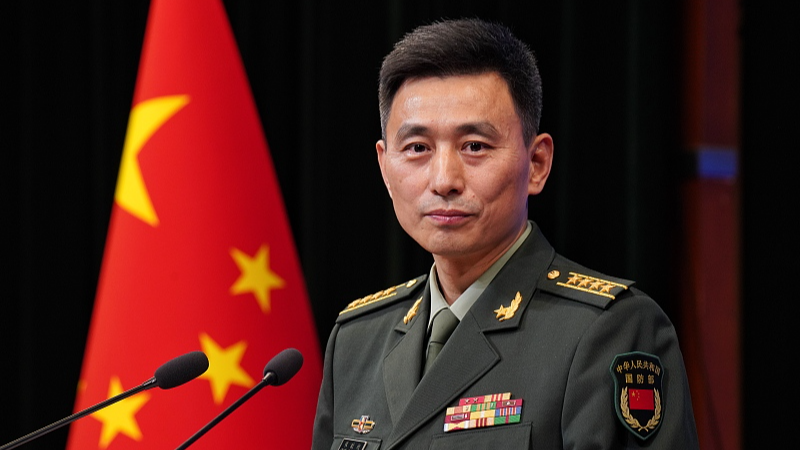US-China Trade Talks; Businesses Turn to Vietnam for Goods; China Invests in Latin America Solar Energy; China's Latest Advancements in AI

US-China Trade Talks Make 'Substantial Progress'
The recent discussions between the US and China regarding trade tariffs have shown promising advancements. The New York Times reports these talks, taking place with contributions from notable journalists Amy Chang Chien, Alan Rappeport, and Ana Swanson, indicate substantial progress in the ongoing trade impasse. The narrative centers around the US acknowledgment of China’s willingness to negotiate on tariffs that have long created roadblocks in bilateral trade.
This story highlights a shift in approach, with statements suggesting a temporary cessation of some tariffs, a move likely intended to ease tensions and stimulate dialogue. These changes impact global markets as both nations play pivotal roles in international trade dynamics. The alterations in tariff policies are expected to provide a short-term boost to interconnected supply chains, particularly in electronics and consumer goods.
Trade Agreements and Their Strategic Implications
Xinhua paints a slightly different picture, focusing on the strategic harmony achieved and the potential mutual benefits of a more cooperative US-China economic relationship. The Chinese publication stresses the essence of mutual interest and cooperation, viewing trade talks as a foundation for shared victories rather than isolated gains. Here, the strategy involves the larger scope of ensuring stable global economic growth, leveraging joint potential, and expanding cooperative domains.
The publication suggests a balanced view—that disagreements are natural but should be managed through dialogue and respecting mutual interests. Xinhua’s narrative may intend to influence domestic and international perceptions by emphasizing cooperation and its alignment with global developmental aspirations.
An Analysis of Temporary Tariff Suspension
The BBC echoes the interim nature of the tariff cessation, noting a 90-day halt in enforcement that illustrates a tactical pause in economic confrontation. The report outlines the intricate details, such as temporary adjustments to duty rates, reflecting a calculated diplomatic maneuver designed to deescalate tensions.
This pause could signal temporary relief for global markets, potentially reducing inflationary pressures caused by the trade war’s ripple effects. Yet, this narrative also casts a critical eye on the sufficiency and sustainability of such measures, questioning the long-term feasibility without further strategic agreements. The analysis reflects a keen understanding of economic strategy, intertwined with geopolitical negotiations.
Sino-American Economic Tensions and Their Ripple Effects
The New York Times Chinese edition explores the consequences of U.S. tariffs on Chinese goods, which have pushed Chinese enterprises towards Vietnam to circumvent trade barriers. This move has prompted supply chain shifts, with Vietnamese cities emerging as new hubs for manufacturing plants relocated from China. Such transitions illustrate the broader impact of international policy decisions on regional economies and highlight Vietnam’s increasing role in global supply chains.
The article provides insight into the complex interplay between geopolitics and economics, where external pressures from decisions in Washington lead to tangible changes within Southeast Asian economies. It underlines the need for adaptability in an increasingly interconnected world, where businesses must maneuver through political landscapes to sustain operations and growth.
China-Latin America: Sustainable Energy Cooperation
The story from CCTV brings a different spotlight to China’s role globally—this time in Latin America. The focus is on the vast "solar farms" beginning operation in Mexico, symbolizing China’s rising influence in green energy initiatives beyond its borders.
This initiative supports global sustainability goals, reflecting China's pivot towards clean energy leadership. It reinforces China's strategic narrative of bolstering international partnerships through infrastructure and technology, demonstrating a conscious effort to link economic growth with environmental stewardship. The investment in Latin America's renewable energy showcases a diversified approach to geopolitical influence, extending beyond traditional trade concerns.
Currency Fluctuations and Economic Implications
The United Daily News report covers developments in the foreign exchange markets, noting the midday closing of the New Taiwan Dollar at 30.254 against the US dollar, a minor appreciation. This piece detailed trading volumes, opening and peak prices, foreshadowing potential impacts on Taiwanese market dynamics. UDN's narrative captures the intricacies of currency exchange, highlighting concerns among financial analysts regarding interest rate hikes and market volatility while offering insights from local banking experts. Such fluctuations may influence cross-strait relations, as Taiwan’s economic policies often reflect a balancing act in its larger geopolitical strategy with China. Through details of multi-sector reactions and expert opinions, the article serves to educate a financially literate audience on market conditions and broader economic challenges.
AI in Education: Balancing Innovation and Integrity
The The Paper tackles the integration of AI in Chinese primary and secondary education. The Ministry of Education's newly released guidance limits students' independent use of generative AI yet promotes its potential to support personalized learning and teaching. This guidance aims to ensure data privacy and educational integrity, highlighting AI’s potential while urging caution against technological over-reliance among young students.
This emphasis on balancing innovation with ethical standards reflects China’s cautious approach to AI in education, seeking to harness its benefits without undermining educational principles. Such measures serve as a blueprint for other nations grappling with similar challenges in the digitalization of education, emphasizing the importance of regulatory frameworks that protect privacy and prevent misuse.
Innovations Blending into Daily Life
Through the lens of the 27th China Beijing International High-tech Expo, we get a glimpse of how rapidly China is integrating scientific innovations into everyday life. Organized at the National Convention Center, the expo showcased applications across diverse sectors like intelligent manufacturing, information technology, and healthcare. A central exhibit was the revival of the Fuxing train simulation, which delighted attendees with a virtual driving experience, illustrating AI's future potential in transportation [news.cn]. This expo strives to show how technology not only improves infrastructure but also merges into societal fabric, bringing warmth and efficiency.
Evident is the embracement of 'Digital Chinese Medicine' showcased through a highly sophisticated robot capable of executing precise therapeutic treatments using AI-driven visual systems. This convergence of traditional medicine with modern technology highlights China's commitment to augmenting its healthcare service capabilities. Such advancements are not merely technical marvels but are aimed at reshaping traditional practices for contemporary needs, promoting health and wellness on a global front.
Commercial Aerospace: A New Frontier
In another exciting development, the China Bengbu Commercial Aerospace Industry Development Conference laid the groundwork for expanding the country's aerospace capabilities. Held in Bengbu City, Anhui Province, this particular event underscores the strides China is making in establishing an integrated ecosystem that combines rocket, satellite, and service chains into a cohesive industrial framework [news.cn]. This kind of innovation aims to position the region as a key commercial aerospace manufacturing hub in the influential Yangtze River Delta.
The focus here is not only technological but also communal development, as building such an industrial center promises economic uplift and skill development for local populations. The elevation of this sector typifies China's strategy to leverage its technological advancements for larger societal gains, presenting new employment and educational opportunities while driving global competition.



